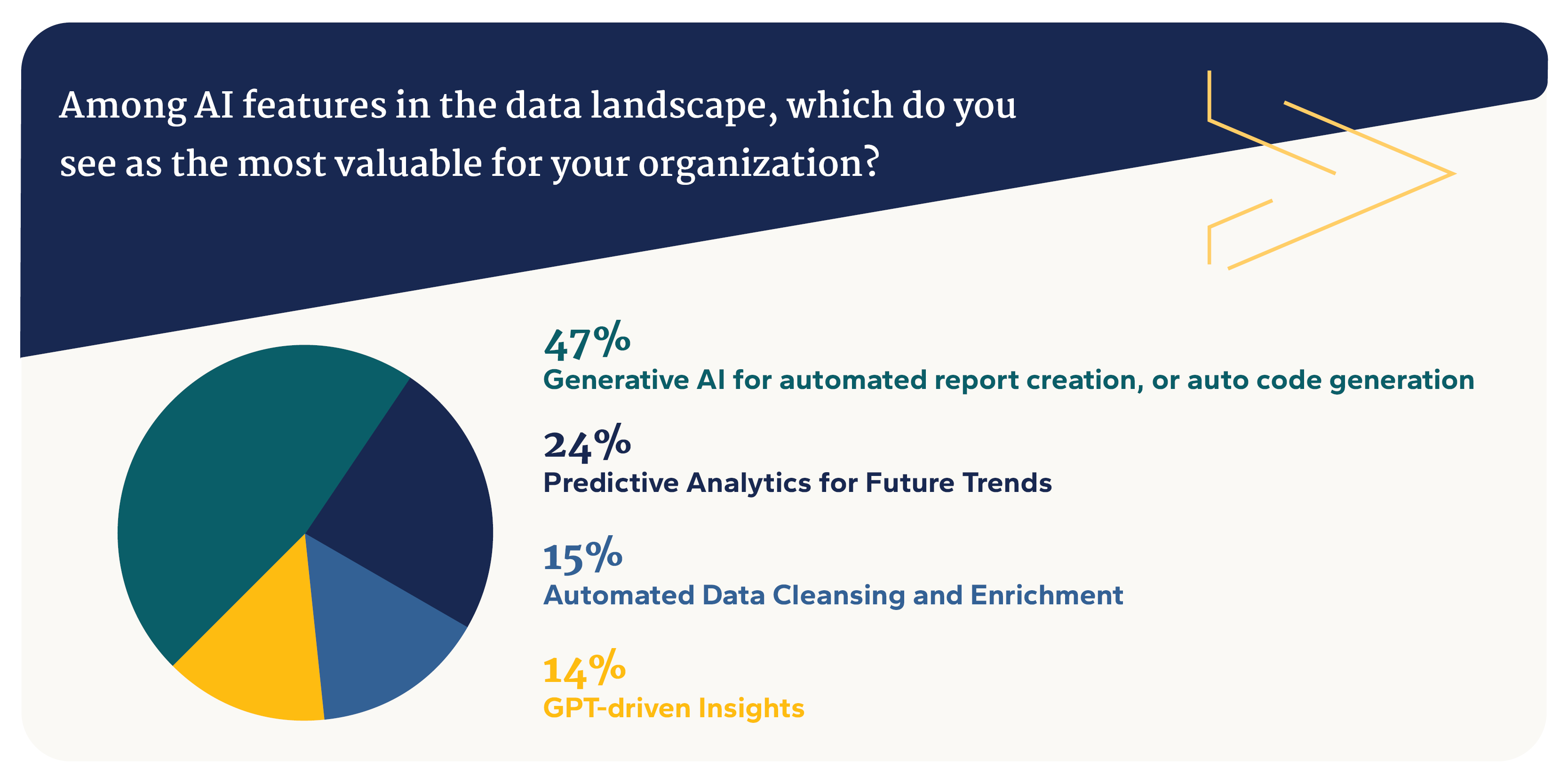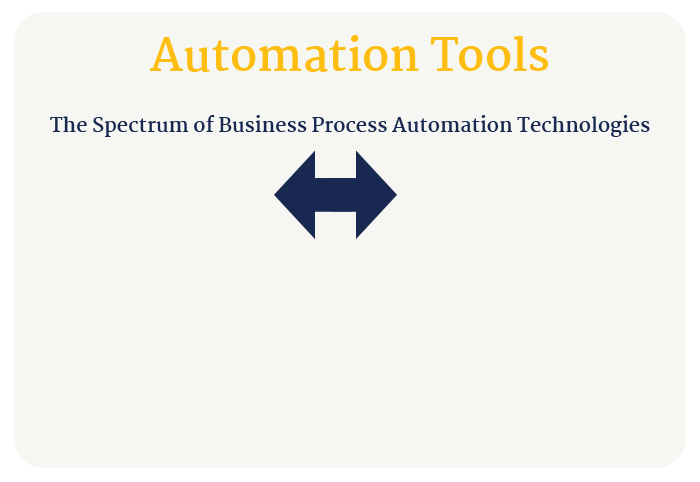Key Takeaways
- Organizations are under pressure to invest in AI and automation to address talent shortages and evolving employee expectations.
- Successful implementation of AI and automation requires a thoughtful strategy that considers people, processes, and technology. It's important to identify the problems that need solving and then find the appropriate technology solutions.
- Automation can be applied across various departments and industries, such as HR, construction, and healthcare. Examples include streamlining the hiring process, improving loss management updates, and expediting Medicaid submissions.
Employees today have higher expectations than ever before. One key to attracting and retaining top talent is making sure your employees are satisfied with their jobs. Are they spending hours (or even days) on repetitive or complicated manual processes?
Salesforce research shows dissatisfaction with technology makes employees twice as likely to leave and less likely to recommend their employer. In today’s tight labor market, every hour your team spends on manual tasks is an hour you lose on driving growth, innovation, and customer value.
Here’s the truth: the way you implement and optimize technology will be a key differentiator in the race for top talent.
- Start by asking your employees the most painful part of their jobs. Then read how to identify and improve inefficient business processes.
How to Automate Your Manual Processes
Automation isn’t about replacing people — it’s about removing the repetitive work that holds them back. By refocusing your workforce on strategic, high-impact tasks, you foster innovation, retention, and job satisfaction — all while boosting operational output.
So where do you start?
When it comes to automation and artificial intelligence (AI), getting started doesn’t always mean starting from scratch. The key to successfully implementing automation and AI is in developing a thoughtful strategy that considers your people, processes, and technology.
Remember: you shouldn’t select a technology first and then see what problems it can solve; you will be better served by deciding which problems you need to solve and then finding a technology that provides a solution.
You can automate any process, but you must consider whether the process is worth automating in the first place.
Look for areas where AI and automation can quickly make a difference, such as manual tasks, improving customer service, or enhancing product development.

Automation in HR
From admin and finance to HR and marketing, the benefits of process optimization and automation are far-reaching. You will find opportunities for process improvement throughout your entire organization. Take, for example, the hiring process.
For one client, our team was able to orchestrate the hiring process to flow seamlessly between departments using the software they already used daily. Their new automation functions as a “digital project manager” that is programmed to enhance the process and reduce inefficiencies. When someone is ready to hire a new role, they simply enter the required information in Microsoft Teams, which is then immediately transmitted to the HR department, who receives a notification about their next step. After those steps are complete, a notification is sent to the IT department signaling their upcoming tasks. This is all done by leveraging the software that the team already uses, so there’s no switching back and forth between systems.
Watch how Microsoft Copilot can change the way your team tackles everyday work.
Want to hear more? View the entire on-demand recording.
Automation in Construction
For construction companies that work closely with insurance carriers, submitting accurate and timely loss management updates is critical — but when systems don’t talk to each other, it becomes a frustrating, manual task. One of our clients faced significant challenges extracting data from their insurance claims management system and pushing information into their analysis system due to a lack of open API access. On top of that, each insurance carrier required special approval, creating additional roadblocks.
Our team built a solution that removes these barriers. The automation pulls data and documentation (like photos and work details) directly from their CRM — where their team is already managing mitigation work — and sends that information into the analysis system. This eliminates the need for duplicate data entry and ensures all employees can continue working in a single, familiar environment.
By replacing a highly manual, error-prone process with automation, the company now saves significant time, reduces the risk of mistakes, and ensures their loss updates meet the strict documentation standards required by insurance carriers. It's a purpose-built solution for construction businesses that need to align tightly with insurance processes — without sacrificing efficiency or employee experience.
Automation in Healthcare
Our team also worked with a managed care provider serving individuals with disabilities through both in-home and out-of-home care services. With no way to upload their Medicaid submissions in bulk, their team would spend days submitting claims one-by-one through state-run portals.
Our team built a custom robotic process automation (RPA) solution that utilizes their existing billing spreadsheet and submits each claim to the correct state’s Medicaid portal. Once the automation process is complete, they receive an email detailing the results of all submitted claims, including whether they were accepted, rejected, or if there are errors to be reviewed.
This process has saved an incredible amount of time for their billing team and reduced the risk of human error that comes from manual processes. Their new RPA solution has not only made their operations more efficient but has also expedited their revenue stream. By not having to wait days just for the claims to be submitted, they are able to see their reimbursements and manage any denials sooner.
Additional Automation Use Cases
- Built-in workflow automation can streamline the approval process for expense reports. When an employee submits an expense report, the workflow system can route it to the relevant managers for approval, automatically notifying them and tracking the progress until the report is approved or rejected.
- Low code platforms can be used to automate the creation of simple mobile app interfaces. For example, a low code platform can enable a non-technical user to quickly build a basic mobile app for collecting customer feedback without writing extensive code.
- Integration platforms can automate the process of synchronizing customer data between a CRM system and a marketing automation platform. When a new customer is added or updated in the CRM, the integration platform ensures the same data is reflected in the marketing automation system.
- iBPMS can automate complex decision-making processes. For instance, in a loan approval process, an iBPMS can automatically evaluate an applicant's credit history, income, and other relevant data to make an informed decision on whether to approve or deny the loan application.

Each of these technologies can be used to automate various tasks, making business processes more efficient and reducing the need for manual intervention.
When is it time to invest in automation?
The traditional way of determining whether it’s time to invest in a technology has focused on numbers — by evaluating the balance sheet and seeing how long it will take to realize ROI. But a new metric has entered the equation: how does this affect employee satisfaction and improve the efficiency of your current staff? The ROI may not be as black and white, but the investment in your employees will go a long way.
To shape your digital strategy, review your team's capabilities, business structure, and technology stack.
- Identify organizational strengths and weaknesses.
- Assess team skills and staffing levels. Do they have the expertise and willingness to change?
- Evaluate processes and their technological efficiency. Are there manual tasks? How effective are current systems?
- Analyze current technology systems for gaps that impact business objectives.
- Ensure existing processes are necessary and valuable by asking: Is there a business need for the current method? What value does it add to the business or customers?
Not every automation initiative requires a massive overhaul. Quick wins — like streamlining invoice approvals or syncing customer data between systems — can deliver fast ROI and build momentum. But true impact happens when these wins are aligned under a broader modernization strategy.
Top Challenges with Automation and AI
Where organizations struggle most is in developing a strategy, constructing a scalable architecture, and implementing a governance framework.
- Strategy: Many organizations struggle to define a comprehensive digital modernization strategy. They may not fully understand how technology can best support their long-term objectives, leading to a lack of clarity in their approach. If the strategy is disconnected from the organization’s core mission, it can lead to wasted resources and missed opportunities.
- Architecture: One of the biggest architecture challenges is integrating new digital solutions with existing legacy systems. Another top challenge is ensuring that the architecture can scale to accommodate growing data volumes and user loads.
- Governance: Governance challenges often revolve around change management. Getting buy-in from employees and stakeholders, and managing the cultural shift that comes with modernization, can be difficult.
Modernization isn’t a one-time investment — it’s an ongoing evolution. Without a flexible architecture and governance model that supports continuous learning and adaptation, even well-implemented tools can quickly become obsolete.
Automation is an Investment in Your People
An investment in technology is an investment in your employees — and in the future of your organization.
Our team can help you determine where automation and AI fit in your organization, overcome common barriers to modernization, and create a strategy that encompasses your data architecture and governance.
Make a habit of sustained success.

Business Process Automation
Who We Are
Eide Bailly is a CPA firm bringing practical expertise in tax, audit, and advisory to help you perform, protect, and prosper with confidence.



